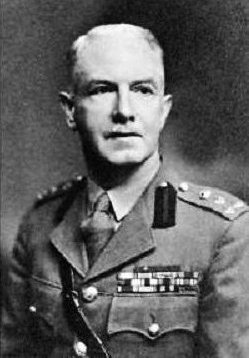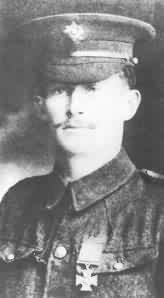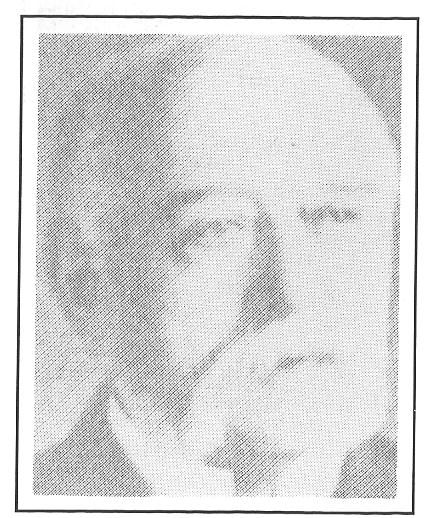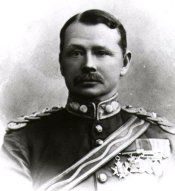|
|
Post by groundhog on Jan 21, 2013 8:54:04 GMT
John Sinton
Mesopotamia
21st January 1916  John Sinton was born in British Columbia on 2nd December 1884 to a family of Northern Irish Quakers. The family returned home in 1890 and Sinton studied medicine at Queen’s University Belfast. He specialised in tropical medicine and joined the Indian Medical Service in 1911. During World War 1 Sinton served with the Indian Army in Mesopotamia. On 21st January 1916 at Orah Ruins near Kut-el-Amara the Bengal Lancers suffered heavy casualties. Captain Sinton tended the wounded under fire and was wounded five times, being hit in both arm and in the side. He refused to be evacuated and continued treating the wounded until darkness ended the fighting. For conspicuous bravery and devotion to duty he was awarded the Victoria Cross. Between the wars Sinton worked for the civil branch of the Indian Medical Service a a malariologist. During WW2 he was recalled to the army to command a hospital in India. He retired a a Brigadier in 1943 but continued working in the Far East until after the war when he retired to live in Cookstown, Co. Tyrone. He died there on 25th March 1956 and is buried in Claggan Presbyterian cemetery, Cookstown. His VC is held by the Army Medical Services Museum in Aldershot. |
|
|
|
Post by groundhog on Jan 22, 2013 17:00:00 GMT
Nevill Coghill
Isandlwana, South Africa
22nd January 1879 Nevill Josiah Aylmer Coghill was born in Dublin on 25th January 1852, the eldest son of a minor artistocrat. His father was 4th Baronet Coghill. Nevill joined the army and in January 1879 he was a Lieutenant in 1st Battalion, 24th Foot, which would become the South Wales Borderers a few years later. Amongst several disasters in its history the 24th was the main unit involved in the massacre at Isandlwana on 22nd January 1879 during the Zulu War. As the British positions were being overrun by the Zulu, one officer, Teignmouth Melville was ordered to escape taking the Queen’s colour of the regiment with him. While trying to cross the Buffalo River which was in flood, Melville lost his horse. Coghill came to his assistance but to no avail. Both men were overtaken by Zulus and killed after a short struggle. Their bodies were subsequently found and buried where they died on the riverbank. The colours they died to save were later found in the river. At the time of their deaths the Victoria Cross could not be awarded posthumously so Coghill’s VC was not awarded until 15th January 1907, 28 years after his death. Coghill is buried where he fell on the banks of the Buffalo River in modern-day KwaZuLu-Natal, South Africa. His VC is on display in the South Wales Borderers Museum, Brecon, Wales. An Irishman who had previously won a VC was killed at Isandlwana. He was Pte William Griffiths from Roscommon, who won his VC on 7th May 1867 in the Andaman Islands. Photos; www.findagrave.com/
|
|
|
|
Post by groundhog on Jan 24, 2013 10:40:35 GMT
Rorke’s Dift
23rd January 1879 Just hours after the Isandlwana disaster, the garrison of Rorke’s Drift faced an oncoming Zulu horde. Rorke’s Drift began life as a trading post and farm established by Jim Rorke, an Irish settler in South Africa. It was on the banks of the Buffalo river which in 1879 formed the border between the British Colony of Natal and Zululand. In early January when the invasion of Zululand began the British established a supply depot and hospital at what was by then a mission station. The garrison was formed mostly from B Coy, 1st Bn, 24th Foot . The commanding officer was Maj. Henry Spalding who was off post when the Zulus came and so missed his chance at a place in history. Command devolved to an officer of the Royal Engineers named John Chard who happened to be there fixing a bridge over the river and who chanced to be senior to the garrison 2i/c, the improbably named, Lt Gonville Bromhead. A decision was made to defend the post from the Zulu attack and the garrison held out from late afternoon until the following morning against repeated Zulu attacks. After the embarrassing disaster at Isandlwana, the government were able to use Rorke’s Drift to paper over the cracks and 11 VCs were awarded to men who took part in the defence. Two of the VCs went to men with an Irish connection. Gonville Bromhead  Gonville Bromhead’s Irish link was through his mother, who was from Sligo. Bromhead was born in Versailles, France on 29th August 1845. His promotions were slow because he was hard of hearing, which may also account for why he was at the Drift rather than at Isandlwana. His VC was awarded for his command of the defence alongside Chard and the award speeded up his military career, he was promoted Major in 1883. Bromhead died on 9th February 1891 in Allahabad, India where he is buried in the military cemetery. His VC is in the South Wales Borderers Museum in Wales. James Reynolds  Reynolds was born on 3rd February 1844 in Kingstown, Co. Dublin. He was a Doctor in the Army Medical Department at Rorke’s Drift. He was awarded the VC for attending the wounded under fire and for carrying ammunition from the store to the hospital. He was also promoted Surgeon Major immediately after the battle. Reynolds was later promoted Lieutenant-Colonel. He died in London at the age of 88 on 4th March 1932 and is buried in St Mary's RC Cemetery,Kensal Rise.His VC is in the Army Medical Services Museum, Aldershot. |
|
|
|
Post by groundhog on Jan 28, 2013 12:40:25 GMT
[/img][/center] John Doogan was born in Aughrim, County Galway in March 1853. In 1881 he was a Private in the 1st King's Dragoon Guards, serving in South Africa. When the Boer state of the Transvaal declared itself a republic, a force under Gen Colley invaded in an attempt to reassert British control. The Boers met them at Laing's Nek on 28th January 1881. During the fighting Doogan’s commanding officer became unhorsed in the Boer positions. Doogan rode to his rescue, sustaining a wound in the process. He assisted Col Brownlow onto his horse and was again wounded before making his escape. John Doogan died in Folkestone, Kent on 24th January 1940 and he is buried in Shorncliffe Military Cemetery. His VC is displayed in Cardiff Castle. |
|
|
|
Post by groundhog on Jan 31, 2013 1:05:53 GMT
[/img][/center] Reginald Hart was born in Scariff, County Clare on 11th June 1848. On 31st January 1879 during the Second Afghan War he ran through enemy fire in an attempt to save the life of a wounded private of the 13th Bengal Lancers for which he was awarded a Victoria Cross.` Hart later rose to the rank of General. He died in Bournemouth on 18th October 1931 and is buried in St Mary's Churchyard, Netherbury. |
|
|
|
Post by groundhog on Feb 1, 2013 0:04:26 GMT
Michael O'Leary
Cuinchy, France
1st February 1915  O’Leary was born on 29th September 1890 on a farm in Inchigeela, Co. Cork. He joined the Royal Navy in 1906 and served four years before leaving to Join the army. He served in the Irish Guards for three years and then emigrated to Canada where he joined the Mounties. On the outbreak of WW1 he returned to England as he was an army reservist and subject to call-up. L/Cpl O’Leary became the first man of the Irish Guards to win the VC on 1st February 1915 during an attack on a German trench near Cuinchy. He attacked two barricades in the trench single-handed, killing eight of the enemy and capturing two. O’Leary was promoted to Sergeant and presented with his medal by King George V on 22nd June 1915. After a recruitment drive in Ireland, he was commissioned in the Connaught Rangers and served the rest of the war in the Balkans. After demobilisation he returned to Canada and served in the Ontario police and with the railway. He returned to England in 1932 and joined the army again in 1939. He went to France with the BEF but ill-health forced a transfer to the Pioneer Corps with which he served until 1945 in England. For some years after the war he worked as a building contractor until he retired in 1954. O’Leary died in London on 1st August 1961 and he is buried in Mill Hill Cemetery. His VC is held by the Irish Guards RHQ. |
|
|
|
Post by groundhog on Feb 6, 2013 0:36:20 GMT
William Traynor
Bothwell Camp, South Africa
6th February 1901  William Traynor was born on 31st December 1870, at 29 Moxon Street, Hull, the son of Francis Traynor a Flax Dresser, from Co. Monaghan. His mother was Rebecca Traynor from Hull. Traynor joined 2nd Bn West Yorkshire Regiment on 14th November 1888. He served in India before being sent to South Africa in 1899. By 6th February 1901 he was a Sergeant who had fought in many of the battles of the Boer War. On that night he was on picquet duty outside Bothwell Camp. The Boers drove a herd of horses through the picquet line and over ran two positions. During the fighting Sgt Traynor went out to assist a wounded man and was himself wounded. He called for assistance and a Lance-Corporal responded, together they brought in the wounded man. Despite his own wounds Traynor stayed at his post until morning and was awarded a Victoria Cross. His wounds necessitated a lengthy stay in hospital in England and he was discharged as unfit for military service in 1902. He got the post of barrack warden in Dover, which he held for 33 years before retiring aged 65. William Traynor passed away aged 85 on 20th October 1956 and is buried in Charlton Cemetery, Dover. |
|
|
|
Post by groundhog on Feb 9, 2013 23:43:12 GMT
Arthur Moore
Khushab, Persia
7th February 1857  Arthur Thomas Moore was born in Carlingford, Co. Louth on 20th September 1830. He trained at the Addiscombe Military Seminary for service in the East India Company’s forces and served in the 3rd Bombay Light Cavalry in the Anglo-Persian War. The war was fought over Persian claims to the city of Herat in Afghanistan. The British government believed Persia to be close to the Russians whom they feared had designs on India. It was thought that Russia would some day invade India via Afghanistan so the British worked at keeping Afghanistan under their thumb all through the 19th Century. The largest battle of the war was The Battle of Khushab or Khoosh-Ab fought on February 7th 1857. During the fighting the 3rd Bombay Cavalry charged a square of Persian infantry formed by the 1st Khusgai Regiment of Fars. Moore jumped his horse over the infantrymen and into the square. Unfortunately his horse was killed and landed on Moore, trapping him. Lt Malcolmson rode his horse into the square to extricate Moore. Both men were awarded the Victoria Cross. In the process of jumping in and out of the square the Persians broke and were cattered by the Cavalry. Arthur Moore went on to the rank of Major-General and died in Dublin on 25th April 1913. He is buried in Mount Jerome Cemetery. |
|
|
|
Post by groundhog on Feb 12, 2013 21:23:55 GMT
Eugene Esmonde
English Channel
12th February 1942  Eugene Esmonde was born in Barnsley, Yorkshire, the son of Dr John Esmonde, a medical Doctor in temporary practice there. The family returned home to Drominagh, Co. Tipperary the following year. Eugene served in the RAF and Fleet Air Arm of the Royal Navy from 1928 to 1934, leaving to work as a civilian pilot. When WW2 broke out he returned to the Navy, serving on HMS Courageous and Ark Royal. He was involved in an attack on the Bismark in May 1941 for whichhe was awarded a Distinguished Service Order. On 12th February 1942 the German ships Scharnhorst, Gneisenau and Prinz Eugen, along with their escorts ships left Brest and sailed for Wilhelmshaven through the English Channel, an event that became known as the Channel Dash. Esmonde led six Fairey Swordfish torpedo bombers of 825 Naval Air Squadron in an attack on the German ships. With limited fighter escort the Swordfish had to fly through the attacks of two Luftwaffe squadrons and the anti-aircraft fire of the German ships. All six bombers were shot down and only five of the 18 crew survived. Esmonde’s plane was hit by anti-aircraft fire and then shot down by a FW190 about 3 km from the German fleet. For his courage in leading what amounted to a suicide attack on the German ships Esmonde was awarded a posthumous VC. His body was recovered in April 1942 and he is buried in Woodlands Cemetery, Gillingham, Kent. His great uncle Thomas Esmonde won the VC during the Crimean War in 1855.
|
|
|
|
Post by groundhog on Feb 14, 2013 18:30:13 GMT
William Lendrim
Sebastopol, Crimea,
14th February 1855  William James Lendrim was born in Carrick-on-Shannon, Co. Leitrim on 1st January 1830. In 1855 he was a Corporal in the Royal Sappers and Miners at the Siege of Sebastopol during the Crimean War. On 14 February 1855 Cpl Lendrim supervised the reconstruction of a gun position under heavy fire. In addition he performed two other acts of bravery the following April and was awarded a Victoria Cross. William Lendrim served in the Army until 1871 rising to the rank of Sergeant-Major. He died on 28th November 1891 in Camberley, Surrey and is buried in Royal Military Academy Cemetery, Camberley. His VC is in the Royal Engineers Museum, Chatham, Kent.
|
|
|
|
Post by groundhog on Mar 13, 2013 15:27:51 GMT
William Nash
Lucknow, India
11th March 1858  Nash was born in Co. Limerick on 23rd April 1824. During the Indian Mutiny he served as a Corporal in2nd Bn, The Rifle Brigade. On 11th March 1858 Nash found himself with his company commander and three other men of his company in a street in Lucknow, near the Iron Bridge. One of his comrades was shot through both legs and Nash and another man named Pte Hawkes carried the wounded man to safety under cover of fire from Captain Wilmott. The three men were awarded the Victoria Cross. Nash was later promoted Sergeant. He died in London on 6th April 1875 and he is buried in the St John’s churchyard of the Church in Hackney.
|
|
|
|
Post by groundhog on Mar 19, 2013 11:58:59 GMT
Richard Keatinge
Chundairee, India
17th March 1858  Richard Harte Keatinge was born in Dublin on the 17th June 1825. During the Indian Mutiny he was a Major in the Bombay Artillery serving as a Political Officer with the 2nd Brigade of the Central India Field Force. At the siege of Chundairee he personally led the attacking column through a breach in the walls, having scouted the route on the previous night. Keatinge was wounded in the breach but led the column on into the fort, where he was again wounded. The successful assault on Chundairee was attributed to Keatinge’s courage and devotion to duty, for which he was awarded a Victoria Cross. After the Mutiny, Keatinge served on in India, rising to the rank of Lieutenant-General. He died on 25th May 1904 in Horsham, Sussex where he is buried in Hills Street Cemetery. |
|
|
|
Post by groundhog on Mar 19, 2013 14:45:11 GMT
Edward Leach
Maidanah, Afghanistan
17th March 1879  Edward Pemberton Leach was born in Derry on 2nd April 1847. He was commissioned into the Royal Engineers in 1866 and served with the Bengal Sappers and Miners during the Second Afghan War. On 17th March 1879 he was with a survey party near Maidanah, Afghanistan when they were attacked by Afghan tribesmen. Lt Barclay in command of the escort drawn from the 45th Sikhs was mortally wounded. His men were carrying the wounded officer away and Major Leach led a counter attack of a group of the Sikhs to cover their retreat. He was wounded during this attack which prevented the annihilation of the whole group and was decorated with a Victoria Cross. Leach continued his service in India and was later promoted to General. He commanded in Ireland and the UK before retiring in 1912. Leach died in Italy on 27th April 1913 and he is buried in Grienza Churchyard, Cadenabbia. His VC is on display in the Royal Engineers Museum, Chatham, Kent. |
|
|
|
Post by groundhog on Mar 23, 2013 17:07:30 GMT
Edmund De Wind
Racecourse Redoubt, France
21st March 1918  Edmund De Wind was born in Comber, Co. Down. He worked in a bank before emigrating to Canada. On the outbreak of World War 1, De Wind joined the Canadian Army a s a private and served in France during the Battle of the Somme and Vimy Ridge. In September 1917 he was commissioned a Second-Lieutenant in 15th Bn, Royal Irish Rifles. On 21st March 1918 the German launched a huge offensive in France. De Wind was in command of troops in Racecourse Redoubt near Grugies, France. He remained in command of his position though wounded twice, repelling several German attacks for several hours until mortally wounded. Lt Edmund de Wind is commemorated on the Pozieres Memorial. |
|
|
|
Post by groundhog on Mar 23, 2013 17:21:12 GMT
Claude Raymond
Talaku, Burma
21st March 1945  Raymond was a member of a Kerry family with a tradition of service in the Indian Army. He was born on 2nd October 1923 on the Isle of Wight. In 1945 he was a Lieutenant in the Royal Engineers serving in Burma. Near the village of Talaku on 21st March 1945 his patrol came under fire from Japanese troops located on a jungle-covered hillside. Raymond led an attack on the Japanese position being wounded three times in the process. When the enemy position was taken he oversaw the evacuation of the wounded and the withdrawal of his men before allowing medical treatment for himself. He died of his wounds the following day and was subsequentlyawarded a Victoria Cross. Claude Raymond is buried in Taukkyan War Cemetery, Myanmar. His VC is held by the Royal Engineers Museum, Chatham, Kent. |
|